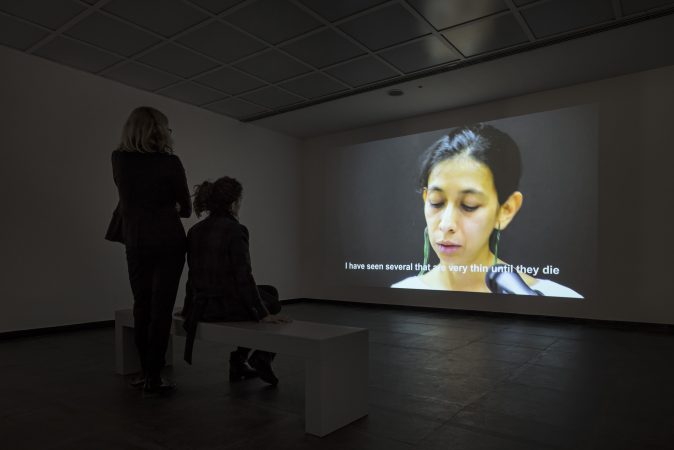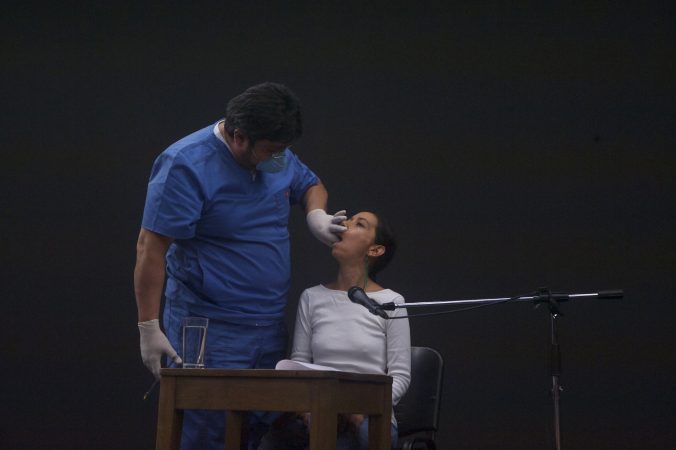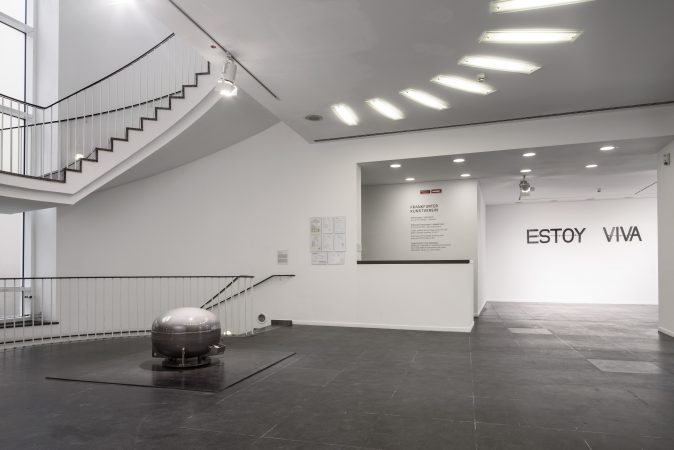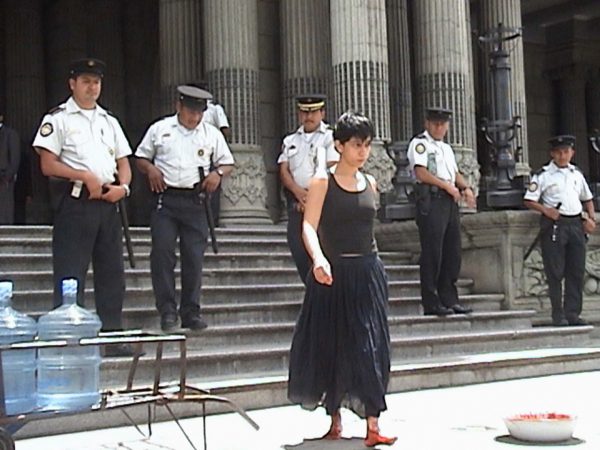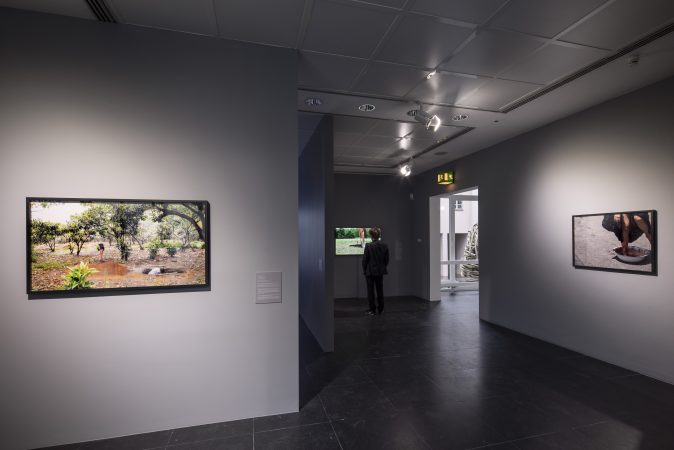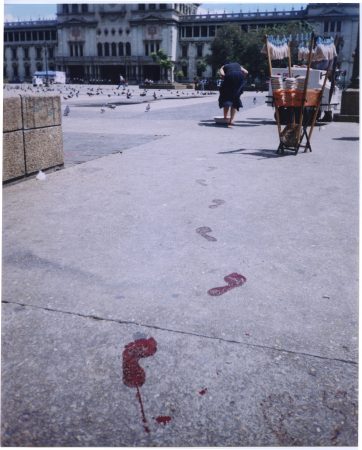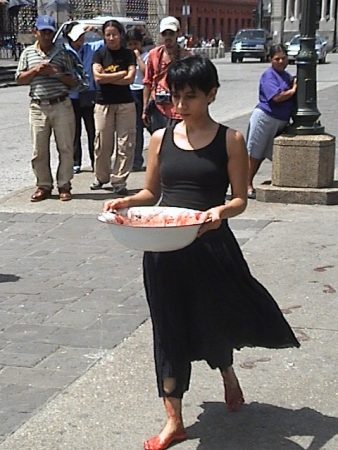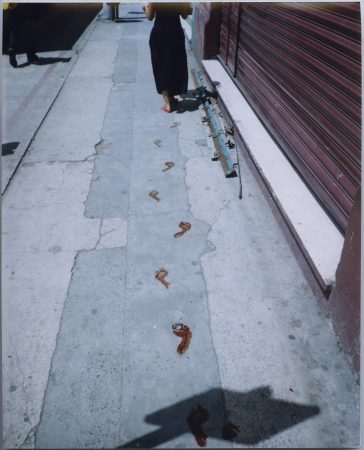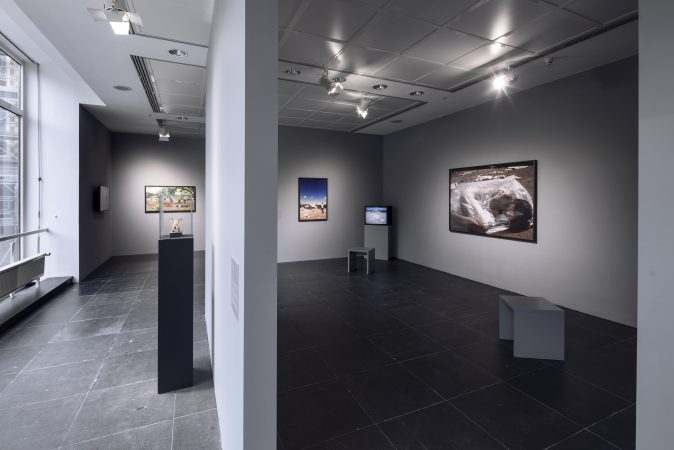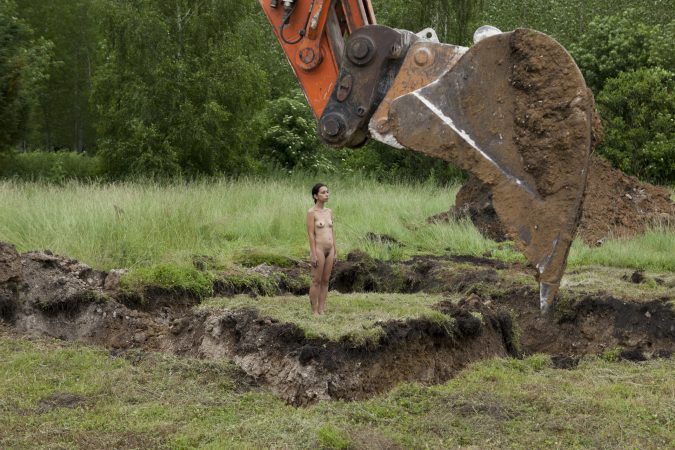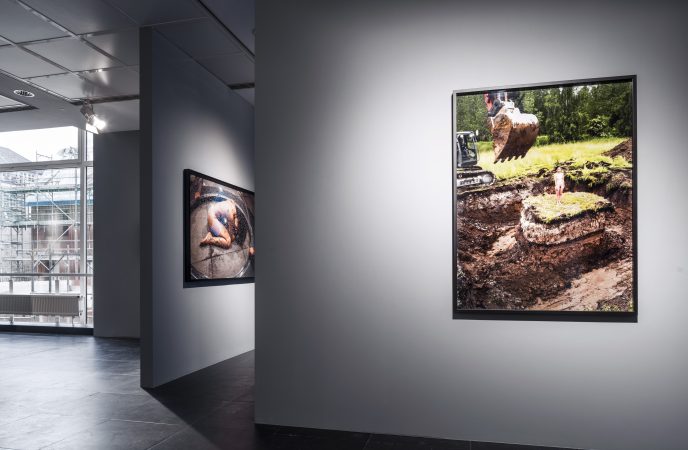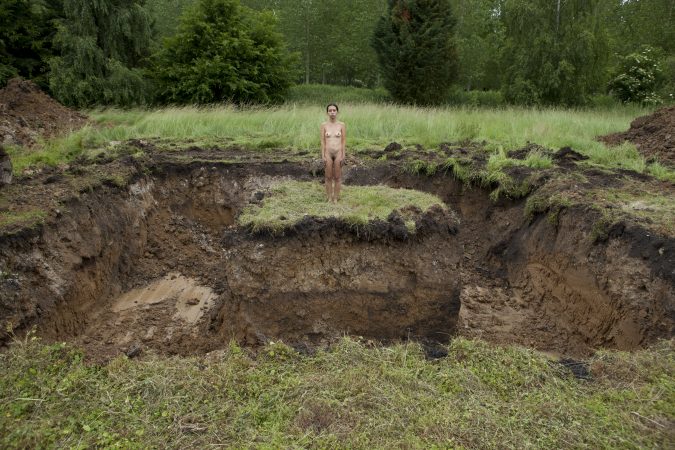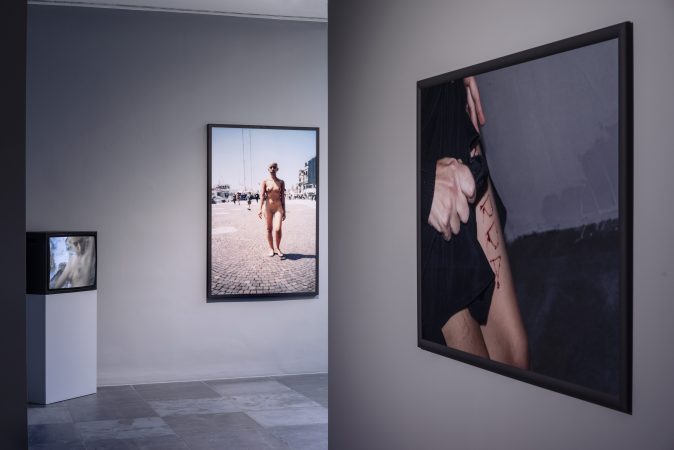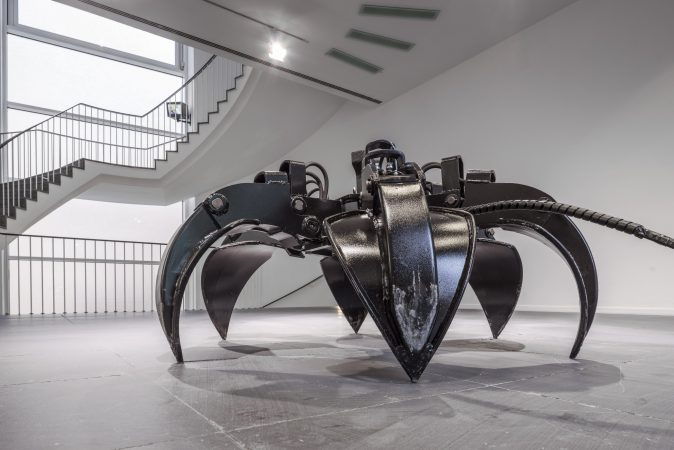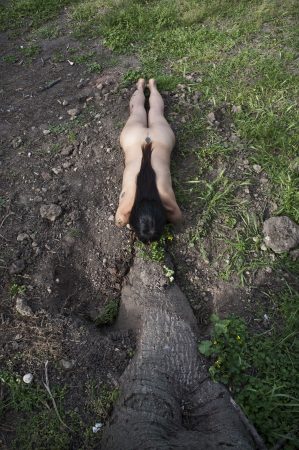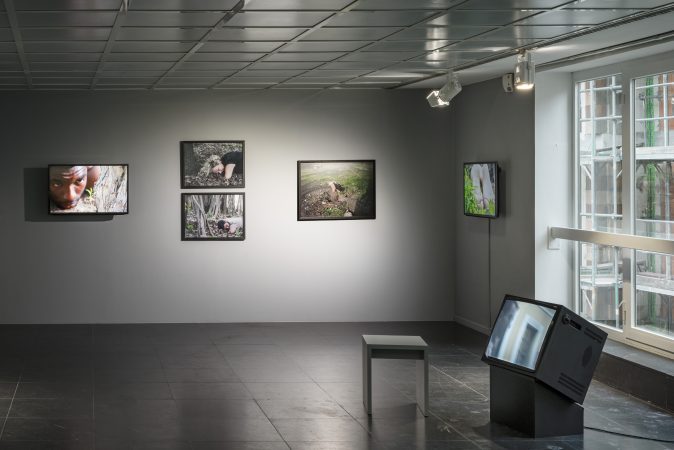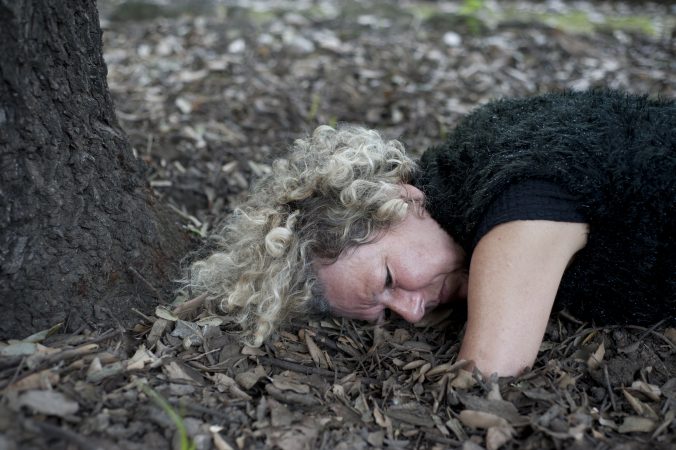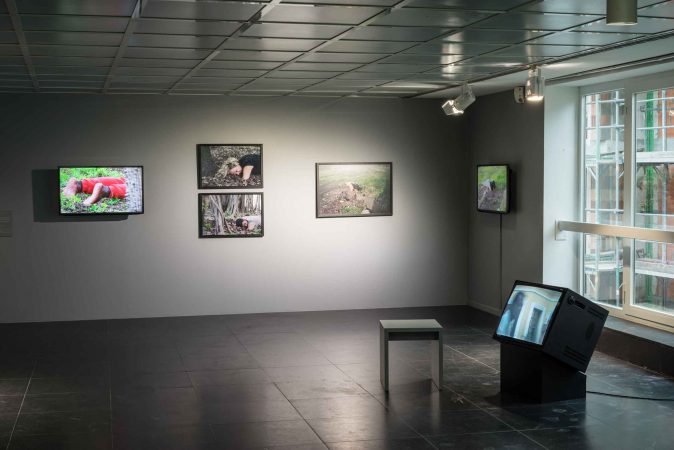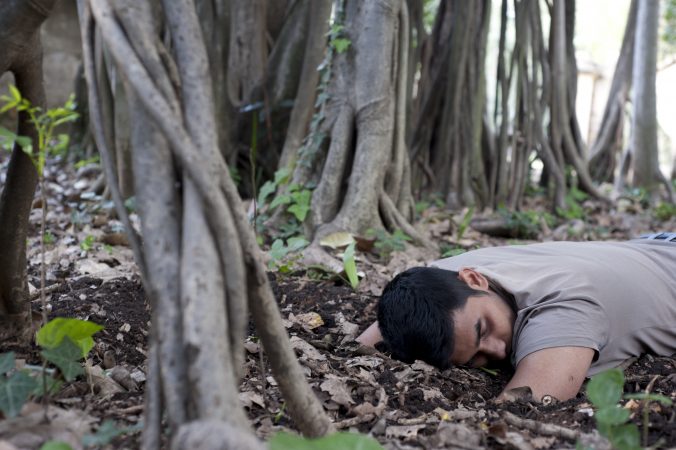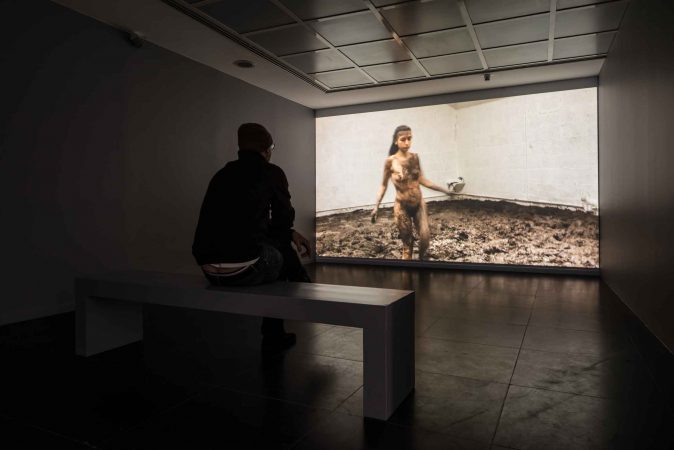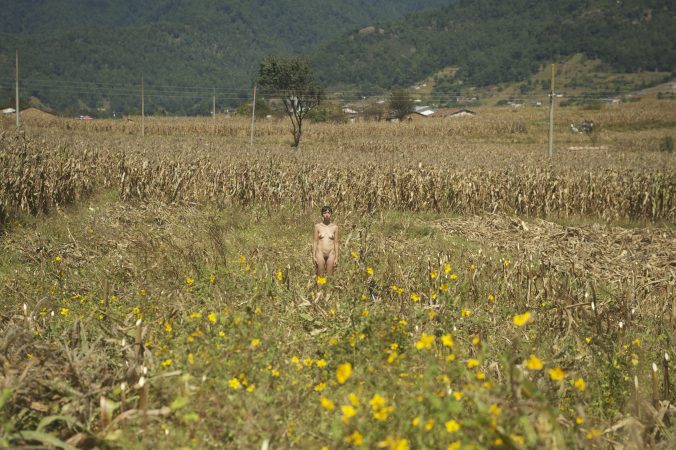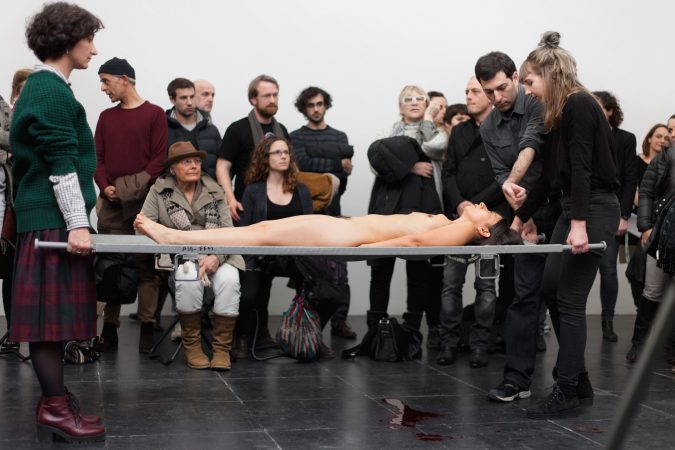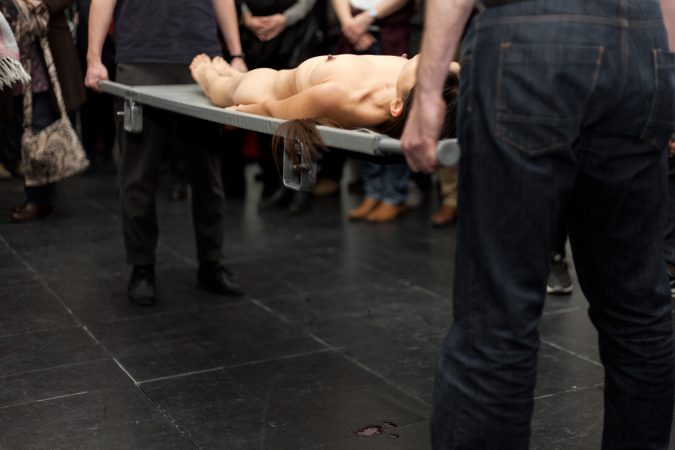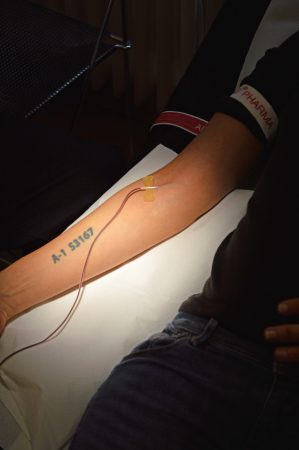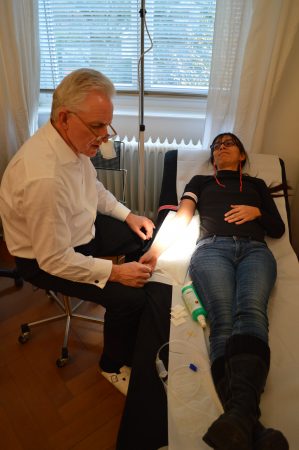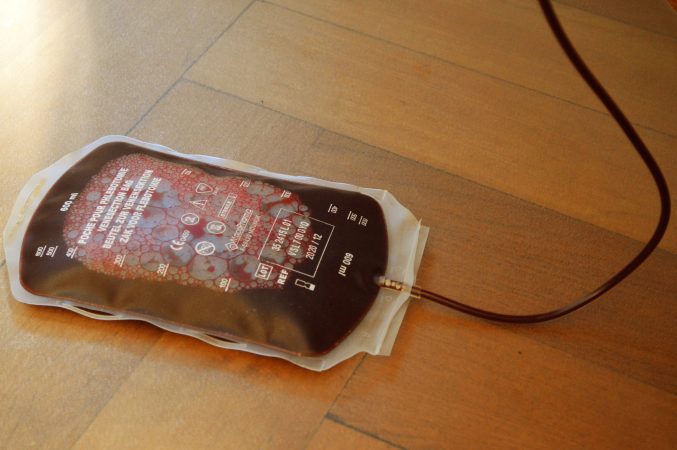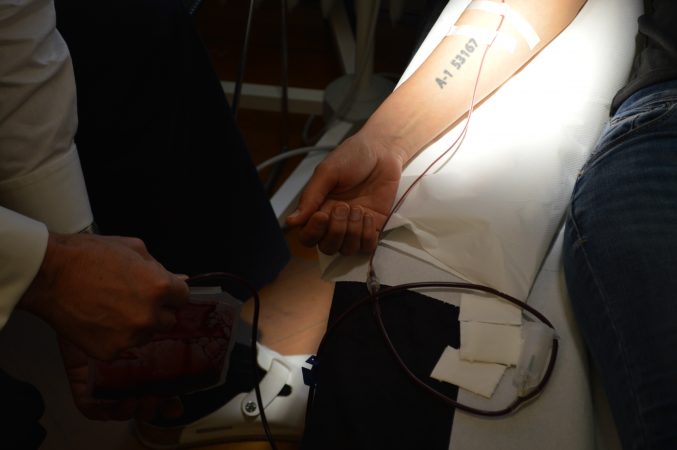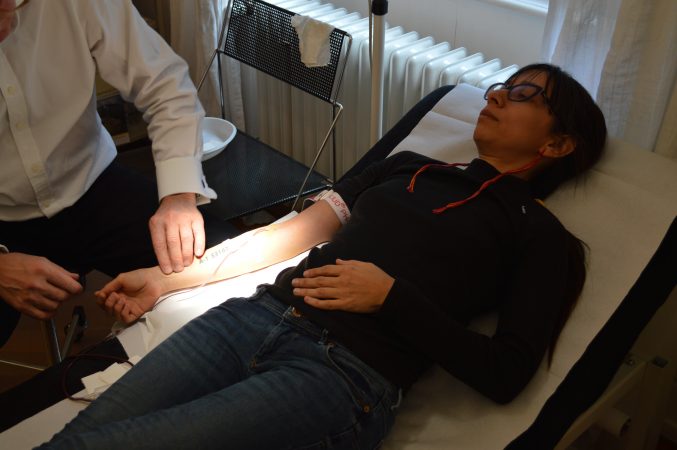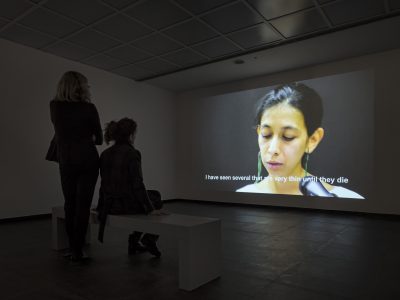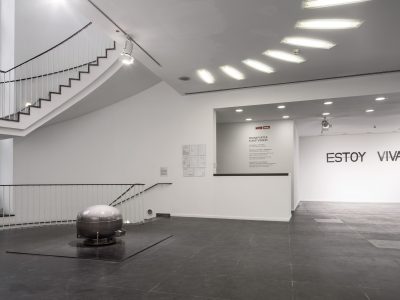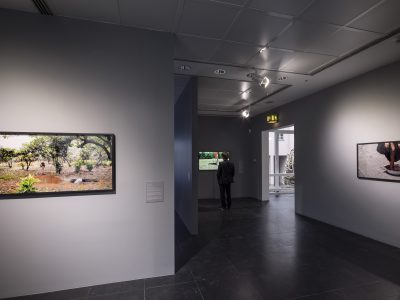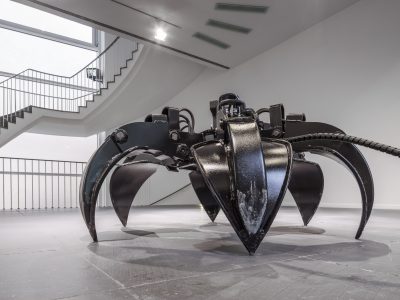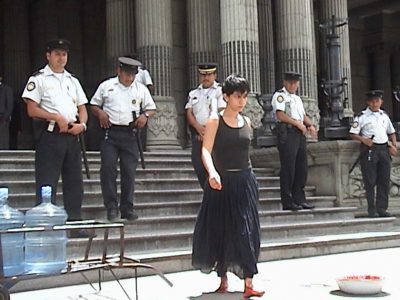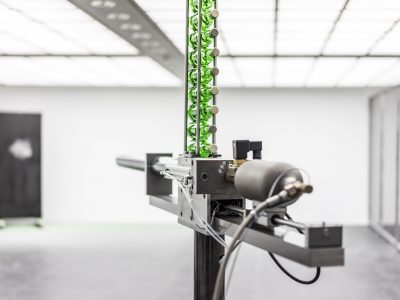Regina José Galindo. Mechanisms of Power
19.02.2016 — 17.04.2016
Opening: February 18, 2016, 7 pm
Curator: Franziska Nori; Co-Curator: Eugenio Viola, curator at the Museo d’Arte Contemporanea Donnaregina Napoli (MADRE)
Mechanisms of Power
Under the title “Mechanisms of Power”, the Frankfurter Kunstverein presents two monographic exhibitions of performance artist Regina José Galindo and sculptor Arcangelo Sassolino. Sassolino’s and Galindo’s approaches share the exploration of limitations of art and the constant presence of violence in our society.
Violence is intrinsically linked to power – no matter if this violence is physical or mental, spontaneous or organised, or whether it is happening in private or in public. Violence always serves as an instrument to disrupt, reinforce or defend existing power relations. In their works, Galindo and Sassolino point towards fundamental questions concerning violence and its consequences.
The spatial division of the two monographic overviews takes place through the vertical axis of the building. Associations that arise from juxtaposing facilitate new perspectives on both artists’ works within the course of the exhibition.
“Mechanisms of Power” at the Frankfurter Kunstverein is the first comprehensive exhibition of both artists in a German institution, for which both have especially conceived a new work: the performance “Secreto de Estado” (State Secret) by Regina José Galindo as part of the opening and the sculpture “Purgatory” of Arcangelo Sassolino.
Regina José Galindo
The Guatemaltecan artist Regina José Galindo addressed in her work physical and psychological violence that is caused by unbalanced power relations. Her most important medium for this investigation is her own body, which she defines in her actions as a political body. With her performances she creates striking images that are documented on photographs and video, thus mediating the live events beyond their fixation to a specific place and time. She deliberately submits herself to extreme situations, which investigate the interdependencies between active and passive positions in a field of power relations. Although Galindo’s practice can be associated with the tradition of Body Art and artists such as Ana Mendieta, Marina Abramovic or Wolfgang Flatz, it originally derived from poetry. In most cases, the artist composes short texts prior to a performance, which serve as a metaphorical foundation for an action or explain the specific context of a work. In the exhibition, these texts are present in form of wall texts in order to give space to Galindo’s voice and writing. The exhibition gives an overview of Galindo’s whole œuvre, highlighting the following key topics of her work:
A History of Violence – Guatemala
Regina José Galindo grew up during the time of the civil war in Guatemala (1960 – 1996). More than 200.000 people died and thousands had to leave the country because of this violent conflict, fought between leftist guerrilla organizations and the government. Galindo’s practice has been shaped by this turmoil in her country that persisted also after the signing of several peace treaties in 1996. One of her earliest and also best-known works is “¿Quién puede borrar las huellas?” (2003) (engl. Who can erase the traces?). This performance was a direct reaction to the candidature of Efraín Ríos Montt for the presidential elections in 2003. Ríos Montt has been president and dictator of Guatemala already in 1982 after a coup détat. During his one year of presidency he was responsible for numerous massacres on the indigenous population and remained exempt from punishment for decades. During her performance, in commemoration of the victims of the armed conflict and as a sign of protest against Montt’s candidature, Regina José Galindo walks from the Constitutional Court to the National Palace in Guatemala City. With her feet dipped in blood, she leaves highly symbolic traces on her path. Eventually, in 2013, a trial was opened against Ríos Montt and he became the first dictator in the world to be charged with and convicted of genocide in his own country.[1] This event has been a catalyst for a whole new group of works by the artist. The sculpture in the entrance hall of the FKV shows the Spanish lettering “ESTOY VIVA”, which can be translated with “I am alive!”. Most of the victims of the violent conflict in Guatemala were part of the indigenous population of the country, among them mostly Ixil-Indians. They were accused of supporting the Marxist guerrilla, one reason for the military government to literally deprive them of their livelihood through a politics of “tierra arrasada” (engl. “scorched earth” politics). It was the protests and efforts of the Ixil communities that lead to the possibility of this case eventually going to court. In the proceedings of the trial their testimonies of families being killed, of raping and torturing, were heard for the first time. The exclamation “I am alive!”, which has been cast into steel by Galindo, also stems from these hearings. The works “La Verdad” (2013) (engl. The Truth), shown in the basement of the Kunstverein, and “Tierra” (2013) (engl. The Earth) both deal with the protest against forgetting on the one hand and the struggle for justice on the other.
Power through Violence – Feminicide
The term feminicide was introduced in order to better denominate and grasp violence against women because of their sex. Due to an increase in violence against women since the beginning of 2000, feminicide has been discussed in Latin America as a problem related to social power structures. Guatemala is among the countries with the highest homicide rate of women in this region of the world. Galindo repeatedly addresses this discourse in her work. The works “No perdemos nada con nacer” (2000) (engl. We don’t loose anything by being born) and “Perra” (2007) (engl. Bitch), which are assembled in the exhibition rooms upstairs, speak of this subject matter. Also connected to this debate is the work “Piel” (2001) (engl. Skin), which was commissioned for the 49th Venice Biennial by invitation of the curator Harald Szeemann. To deprive someone of their hair is usually seen as a way to humiliate and to mark someone as standing outside of society. Galindo shaves off all her bodily hair and then walks naked through the streets of Venice, exposing herself to the gaze of passers-by. Her artist friend Aníbal López, who himself is known for politically provocative works, documented the performance. In the following years Galindo started to increasingly incorporate the reactions of visitors into her performances and became interested in the position of the viewer as an active element in her work.
Activeness and Passiveness
In many of her works Regina José Galindo attributes an ambivalent role to the audience and participants of her performances, as well as to the viewers of their documentations. One example is the performance “Caparazón” (2010) (engl. Shell) that took place in Naples, which is also known by its vernacular name “city of domes”: Galindo lies naked in a fetal position under a perspex dome. A group of people armed with sticks, who had signed up voluntarily beforehand, hits the dome relentlessly until their weapons start to break. The participants seem to let themselves get carried away by their aggression and step into the role of the perpetrator. Galindo surrenders herself to this situation. She appears to be protected by the perspex shell, but this protection could break anytime. Visible in the background are the ones who only take part in this event as passive spectators – just like the viewers of the video documentation. Galindo initiates an active involvement that is carried out by the participants and through which the performance gains a considerable momentum. Her purposeful employment of the shifting boundaries between passive and active spectatorship leads to a fundamental questioning of the consequences of our actions.
The Body as Sculpture
In her most recent works Galindo uses her own body as a kind of sculpture by way of remaining motionless. In works like “Mazorca” (2014) (engl. Corn), this becomes most apparent in situations she arranges in different landscapes. State territories and the soil of the ground within their borders are not just the backdrop but an integral part of power struggles. “Mazorca” speaks of this fact in more ways than one. Regina José Galindo stands in the middle of a field – first hidden by high corncobs. Around her men are cutting down the corn with a scythe. The work creates a historical connection to testimonies from the time of the civil war that reported how government troops purposefully destroyed fields and acres to rid the surviving victims of their livelihood and wield power over them. Today, cornfields are sites of another, more global power struggle. The company Monsanto develops genetically modified corn, which is supported by a US law for the protection and safety of plants. This means that farmers are not allowed anymore to grow their corn seeds themselves, but they have to buy patented seeds every year. Guatemala signed the so-called “Monsanto Law” under the pressure of its trade relations with the US. But in 2014 protests, mainly initiated by small farmers of the indigenous population, lead to a repeal of this law. In her work “Mazorca”, Regina José Galindo interweaves past and present through the symbol of the cornfield and its respective denotations.
About Secrecy: “Secreto de Estado”
For her presentation at the Frankfurter Kunstverein Regina José Galindo developed a new performance that took place during the opening of the exhibition. Under the title “Secreto de Estado” (2016) (engl. State Secret) we see Regina José Galindo lying on a stretcher, carried by two volunteers. Blood is dripping from the stretcher to the floor. What the audience cannot see: the blood comes from a plastic bag under Galindo’s back. It contains her own blood which had been sampled before. The body of the artist is suspended in motionlessness and reveals what is hidden only over time. With the performance “Secreto de Estado” Regina José Galindo questions what we think we know. She uses her own body as metaphor for a political body: it reveals itself to the audience and therefore to a public. What we see is a staging in which the visible and the real course of events deviate. “Secreto de Estado” is an allegory of our perception and awareness of political conditions and relations, which might lead to the wrong conclusions and consequences.
Biography
Regina José Galindo was born in Guatemala City in 1974, where she lives and works.
She participated in the 49th (2001), the 51st (2005), the 53rd (2009) and last in the 54th Venice Biennial in Italy (2011). Furthermore, she was part of the 10th Sharjah Biennial, United Arab Emirates (2011), the 31st Pontevedra Biennial, Spain (2010), the 17th Sydney Biennial, Australia (2010), the 10th Havana Biennial, Cuba (2009), the 2nd Moscow Biennial, Russia (2007), the 3rd Auckland Triennial, New Zealand (2007), the 4th Valencia Biennial, Spain (2007), the 2nd Prague Biennial, Czech Republic (2005), the 3rd Tirana Biennial, Albania (2005) and the 3rd Lima Biennial, Peru (2002). She was awarded the Golden Lion of the 51st Venice Biennial in 2005 for Best Young Artist. Galindo’s work is part of several important museum collections such as the Centre Georges Pompidou, Paris, France, the Solomon R. Guggenheim Museum, New York, USA, the Castello di Rivoli – Museum of Contemporary Art, Turin, Italy, the Daros Latinamerica Collection, Zurich, Switzerland, the Blanton Museum of Art, Austin, USA, the Museum of Contemporary Art, San José, Costa Rica, the Pérez Miami Art Museum and the Cisneros Fontanals Collection, both Miami, USA.
[1] Only two weeks after the trial, the verdict was overturned. Until this day, the revision has been postponed due to apparent health issues of Riós Montt.

